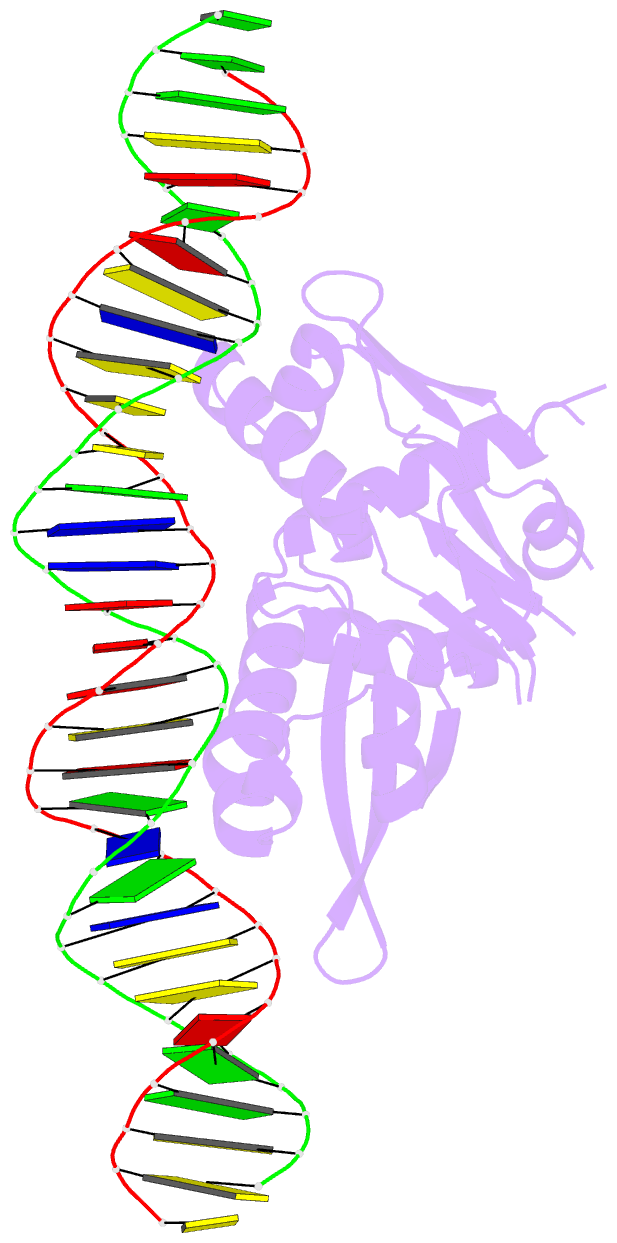Summary information and primary citation
- PDB-id
- 7uxy; SNAP-derived features in text and JSON formats;
DNAproDB
- Class
- DNA binding protein-DNA
- Method
- X-ray (3.15 Å)
- Summary
- Isoreticular, interpenetrating co-crystal of protein variant replication initiator protein repe54 (l53g,q54g,e55g) and symmetrical expanded duplex (31mer) containing the cognate repe54 sequence and an additional g-c rich sequence.
- Reference
- Orun AR, Shields ET, Dmytriw S, Vajapayajula A, Slaughter CK, Snow CD (2023): "Modular Protein-DNA Cocrystals as Precise, Programmable Assembly Scaffolds." Acs Nano, 17, 13110-13120. doi: 10.1021/acsnano.2c07282.
- Abstract
- High-precision nanomaterials to entrap DNA-binding molecules are sought after for applications such as controlled drug delivery and scaffold-assisted structural biology. Here, we engineered protein-DNA cocrystals to serve as scaffolds for DNA-binding molecules. The designed cocrystals, isoreticular cocrystals, contain DNA-binding protein and cognate DNA blocks where the DNA-DNA junctions stack end-to-end. Furthermore, the crystal symmetry allows topology preserving (isoreticular) expansion of the DNA stack without breaking protein-protein contacts, hence providing larger solvent channels for guest diffusion. Experimentally, the resulting designed isoreticular cocrystal adopted an interpenetrating I222 lattice, a phenomenon previously observed in metal-organic frameworks (MOFs). The interpenetrating lattice crystallized dependably in the same space group despite myriad modifications at the DNA-DNA junctions. Assembly was modular with respect to the DNA inserted for expansion, providing an interchangeable DNA sequence for guest-specified scaffolding. Also, the DNA-DNA junctions were tunable, accommodating varied sticky base overhang lengths and terminal phosphorylation. As a proof of concept, we used the interpenetrating scaffold crystals to separately entrap three distinct guest molecules during crystallization. Isoreticular cocrystal design offers a route to a programmable scaffold for DNA-binding molecules, and the design principles may be applied to existing cocrystals to develop scaffolding materials.





